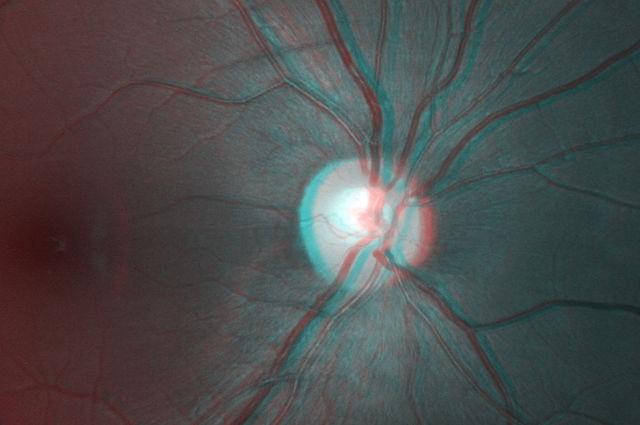This story is part of a series on the current progression in Regenerative Medicine. This piece is part of a series dedicated to the eye and improvements in restoring vision.
In 1999, I defined regenerative medicine as the collection of interventions that restore tissues and organs damaged by disease, injured by trauma, or worn by time to normal function. I include a full spectrum of chemical, gene, and protein-based medicines, cell-based therapies, and biomechanical interventions that achieve that goal.
Picture the world around you without the ability to read, drive, or even recognize your loved ones’ faces. This is the reality for those suffering from macular edema, a debilitating condition caused by fluid accumulation in the macula, the central area of the retina responsible for providing precise and detailed vision.
With symptoms such as distortions, blurriness, and loss of sight, macular edema can profoundly impact a person’s quality of life and daily activities. Finding effective treatments is critical to preserving patients’ vision and enhancing their well-being.
Thanks to recent medical breakthroughs, there are now multiple ways to treat macular edema, including medications, laser therapy, and surgery. These treatments can target underlying causes such as diabetes, high blood pressure, age-related macular degeneration, and inflammatory eye diseases.
Main Causes of Macular Edema
Macular edema is a condition caused by multiple factors, with inflammation being one of the primary contributors. Inflammation triggers the release of cytokines and growth factors, which cause leakage from the blood vessels in the retina. Among these growth factors is vascular endothelial growth factor (VEGF), which plays a significant role in forming new blood vessels and angiogenesis. When someone has macular edema, their body makes too much VEGF. This can cause new blood vessels to grow and leaky blood vessels in the eye.
Besides inflammation, oxidative stress is also a significant contributor to macular edema. The cells in our eyes are susceptible to damage from oxidative stress, which can result in inflammation. This inflammation can be dangerous and lead to the breakdown of the blood-retinal barrier (BRB), which prevents fluid leakage from the blood vessels. When the BRB is compromised, fluid can seep into the retina, leading to swelling and, eventually, vision loss.
It is important to note that macular edema can occur due to various underlying conditions, such as diabetes, ocular hypertension, and age-related macular degeneration. These underlying conditions can cause changes in the retinal microenvironment, leading to the release of pro-inflammatory cytokines, growth factors, and free radicals that contribute to the development of macular edema.
Treatment Options for Macular Edema
The treatment options for macular edema vary depending on the underlying condition, the severity of the edema, and the patient’s overall health. In some cases, addressing the underlying condition, such as controlling blood sugar in diabetes, is enough to resolve the edema. However, in many cases, more aggressive treatment is necessary.
Current treatment options for macular edema include laser photocoagulation, corticosteroids, and anti-VEGF agents. Laser photocoagulation involves using a high-energy beam of light to target the blood vessels in the retina, causing them to seal off and prevent further leakage—corticosteroids, such as triamcinolone, work by reducing inflammation and swelling in the macular tissue. However, corticosteroids have risks associated with their use, such as elevated intraocular pressure and cataract formation.
A Closer Look at Anti-VEGF Treatments
Anti-VEGF agents, such as aflibercept and ranibizumab, are currently the first-line treatment for macular edema. These drugs work by binding to and neutralizing the excess VEGF in the eye, reducing vessel permeability and preventing neovascularization. These agents are delivered through intravitreal injections, which involve injecting the drug directly into the eye. While anti-VEGF agents have successfully improved vision and slowed disease progression, they come with limitations, such as frequent injections, and possible adverse effects, such as inflammation and endophthalmitis.
The advent of bispecific antibodies, such as faricimab, offers a new therapeutic strategy in macular edema treatment. Faricimab targets both the VEGF and the angiopoietin-Tie pathways, providing a complete blockade of neovascularization and vascular leakage.
Numerous studies, including Phase III trials (TENAYA, LUCERNE, RHINE, and YOSEMITE), have demonstrated the efficacy and safety of faricimab in treating macular edema associated with w-AMD and DME. In these trials, faricimab has been shown to maintain clinical efficacy over more extended treatment regimens than aflibercept.
In addition to improving vision outcomes, treating macular edema has significant economic benefits. A recent study estimated the total direct and indirect benefits of DME treatment to be 63.0 billion and 4.8 billion, respectively, over 20 years. This value includes improved quality of life, employment outcomes, and disability outcomes associated with DME treatment.
In conclusion, the treatment options for macular edema are constantly evolving, and the emergence of bispecific antibodies, like faricimab, is a game-changer in treating this debilitating condition. With its comprehensive blockade of neovascularization and vascular leakage, faricimab offers hope for improved outcomes in patients with macular edema.
This innovation not only has the potential to improve the vision outcomes of patients but also contributes to the overall improvement of their quality of life, employment, and disability outcomes over time. As researchers continue to explore and develop new therapies and medications, patients can remain hopeful that effective treatments for macular edema will only continue to improve.
To learn more about the eye, read more stories at www.williamhaseltine.com
Read the full article here





